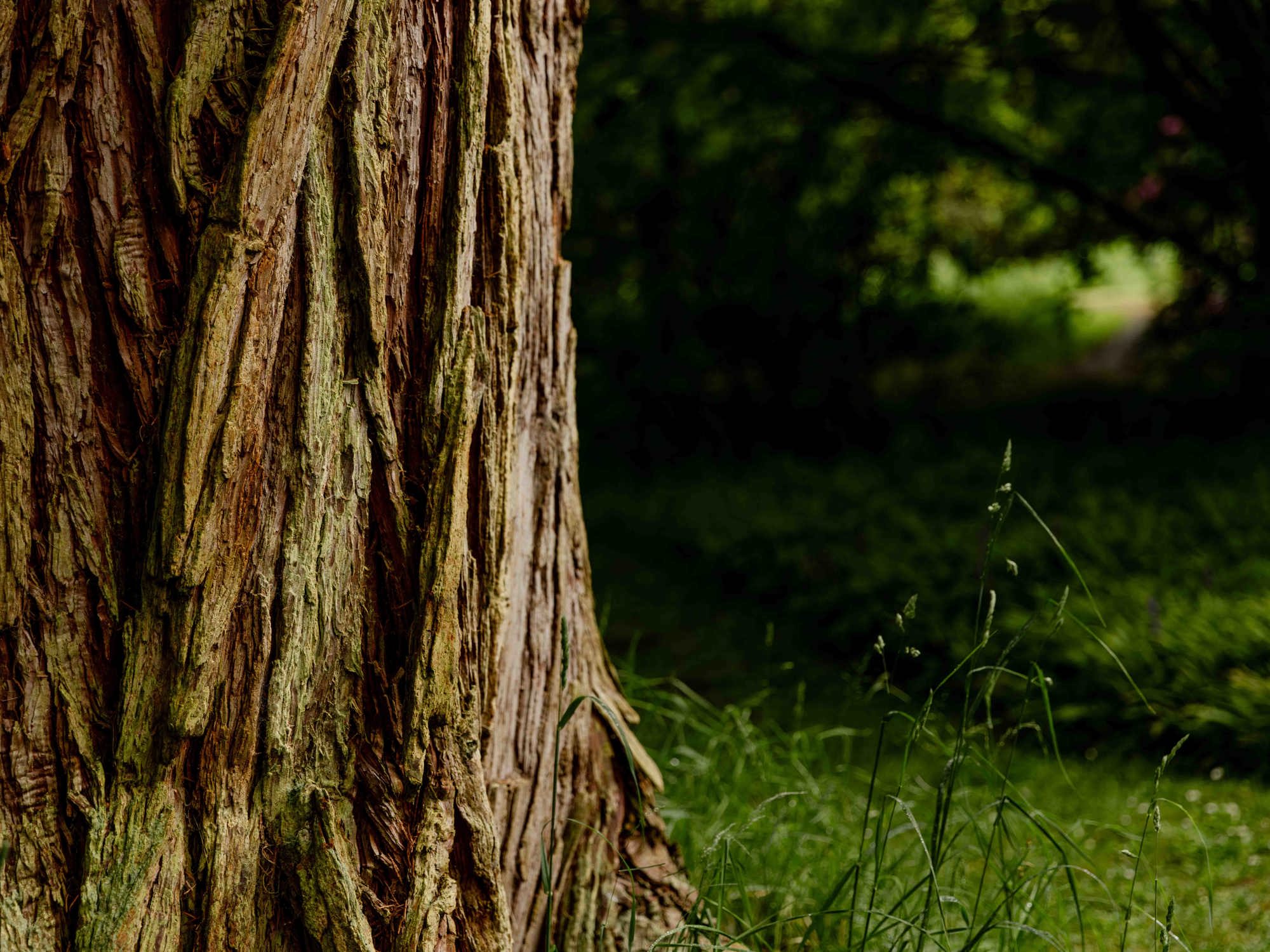While hard hats and diggers can be considered at odds with nature conservation, an innovative tree protection system at the Royal Botanic Garden Edinburgh (RBGE), is combining the latest in construction technology with the need to protect a world-renowned living collection of plants.
The ambitious, multimillion pound Edinburgh Biomes development includes the restoration of RBGE’s heritage Glasshouses but, with construction set to take place in the very heart of the 70-acre site, twelve of the Garden’s 3,500 trees were at risk of damage. Arboriculture specialists at RBGE, environmental consultants Ironside Farrar and construction company Balfour Beatty worked closely with supplier Green Grid Systems to devise a bespoke plan to protect Scotland’s National Botanic Collection.
Will Hinchliffe, Arboriculture Supervisor at RBGE explained: “Trees provide enormous value to society, particularly in urban landscapes where they help people to connect with nature.
“However, they are also very vulnerable. A tree which takes decades or even hundreds of years to reach maturity, can suffer irreversible damage in just a few minutes.
“As curators of trees which are often endangered in the wild, our priority is to protect and retain mature trees that grow in close proximity to the development site. In turn, the survival of prominent features will help to embed the site into the natural environment, adding to the sense of an established landscape when the project ends.”
Gillian Smith, Technical Director at Ironside Farrar added: “As a world-leading botanic garden, RBGE has specific site conditions which first required careful consideration.
“Working closely with manufacturer Green Grid Systems, the team has adapted the existing systems to suit the Garden’s requirements and have delivered a solution that will secure the best long-term outcome for invaluable specimen trees.”
Five years in the planning, the teams incorporated techniques they learned from previous construction projects at the Garden and introduced new technologies.
These include an ingenious root bridge of steel piles and beams submerged into the haul road surface. Designed to protect vulnerable root systems, a void beneath the raft-style grid allows space for future root growth without affecting the final paved surface. It will also disperse the weight of heavy construction vehicles, helping to avoid damage to the roots through compaction or contamination of the soil.
To minimise the risk of flooding, new paths have been created using porous geotextile cells instead of the traditional covering of tarmac. The honeycomb structure of the cells helps to attenuate surface water, ensuring a more sustainable drainage system. Meanwhile, above the ground, immovable protective barriers have been secured around the rarest of trees.
The pioneering action has already attracted visits from tree specialists across the length and breadth of Britain. This not only ensures the safeguarding of trees at RBGE’s world-famous site, it also brings fresh knowledge and creates a benchmark for best practice across the public and private sectors.
The final aim is to deliver a project that will serve as the gold standard in tree protection management, facilitate a major construction development and showcase a Living Collection that is functional, impressive and a calm place for all to enjoy.
ENDS
For further information, interviews or images, please respond to this email or contact Suzie Huggins on 07385 491 460 or Shauna Hay on 07824 529 028.
EDITOR’S NOTES:
The tree collection (arboretum) at the Royal Botanic Garden Edinburgh is comprised of over 3,200 trees from more than 730 species and 56 botanical families. Around two-thirds are of known wild origin and they constitute a research collection, an educational resource and a valuable high-quality urban green space.
Key species in close proximity to the Edinburgh Biomes construction site are the magnificent cedar (Cedrus deodara), ever-popular monkey puzzle (Araucaria Araucana) and long-lived gingko trees (Ginkgo biloba).
Edinburgh Biomes is the most exciting and visionary project being undertaken by the Royal Botanic Garden Edinburgh (RBGE) since its relocation to its fourth site at Inverleith in 1820. The project aims to conserve plant life for generations to come.
Edinburgh Biomes is central to RBGE’s response to the twin challenges of the biodiversity crisis and climate emergency. In a world where 40% of plant species are estimated to be under threat, our mission has never been more urgent.
The project will protect global plant science and conservation through the restoration of the Garden’s A-listed historic Palm Houses, modernist Front Range and research houses. It will also provide new facilities for cutting edge plant science, accelerating RBGE’s research into plant pests and pathogens.
Edinburgh Biomes will create a new destination within the Garden for visitors, staff and academics from around the world - the creation of a new Glasshouse that will enrich our National Botanic Collection, provide a spectacular visitor experience and inspire the scientists, horticulturists and conservationists of the future.
The Royal Botanic Garden Edinburgh (RBGE) is a leading international research organisation delivering knowledge, education, and plant conservation action around the world. In Scotland, its four Gardens at Edinburgh, Benmore, Dawyck and Logan attract more than a million visitors each year. It operates as a Non Departmental Public Body established under the National Heritage (Scotland) Act 1985, principally funded by the Scottish Government. It is also a registered charity, managed by a Board of Trustees appointed by Ministers. Its mission is “To explore, conserve and explain the world of plants for a better future.” Learn more: www.rbge.org.uk.

